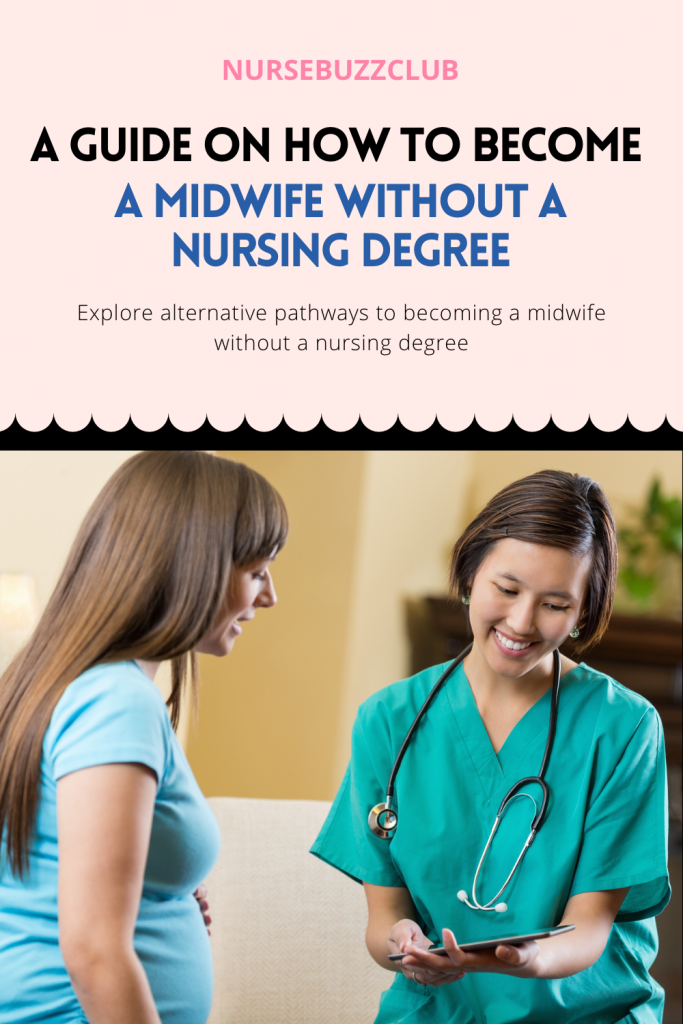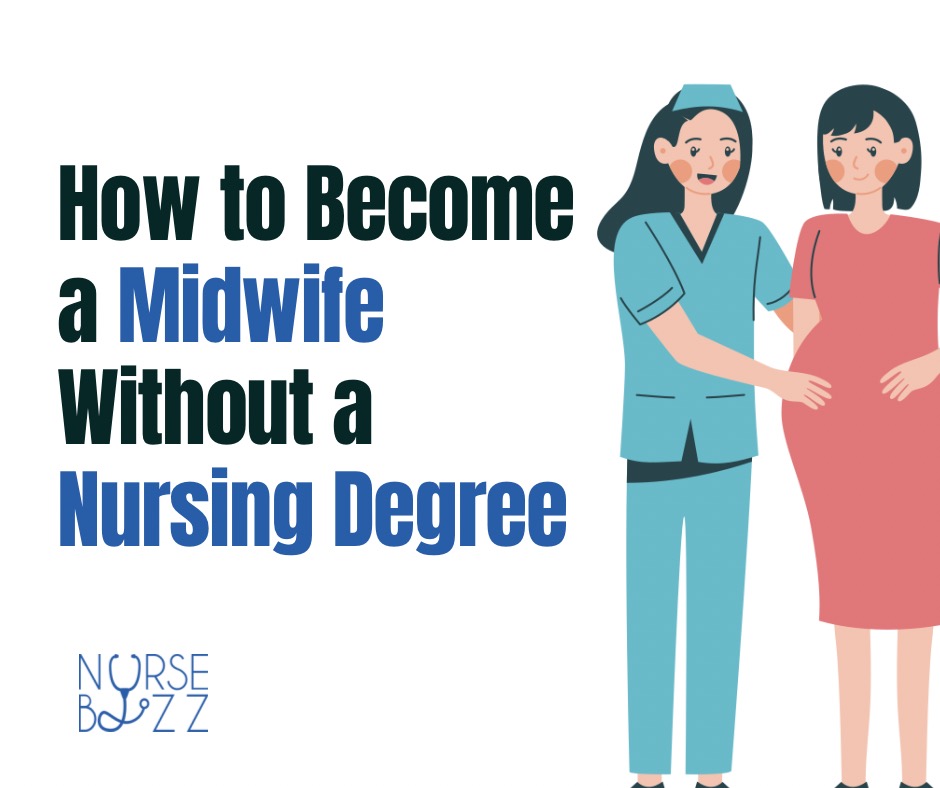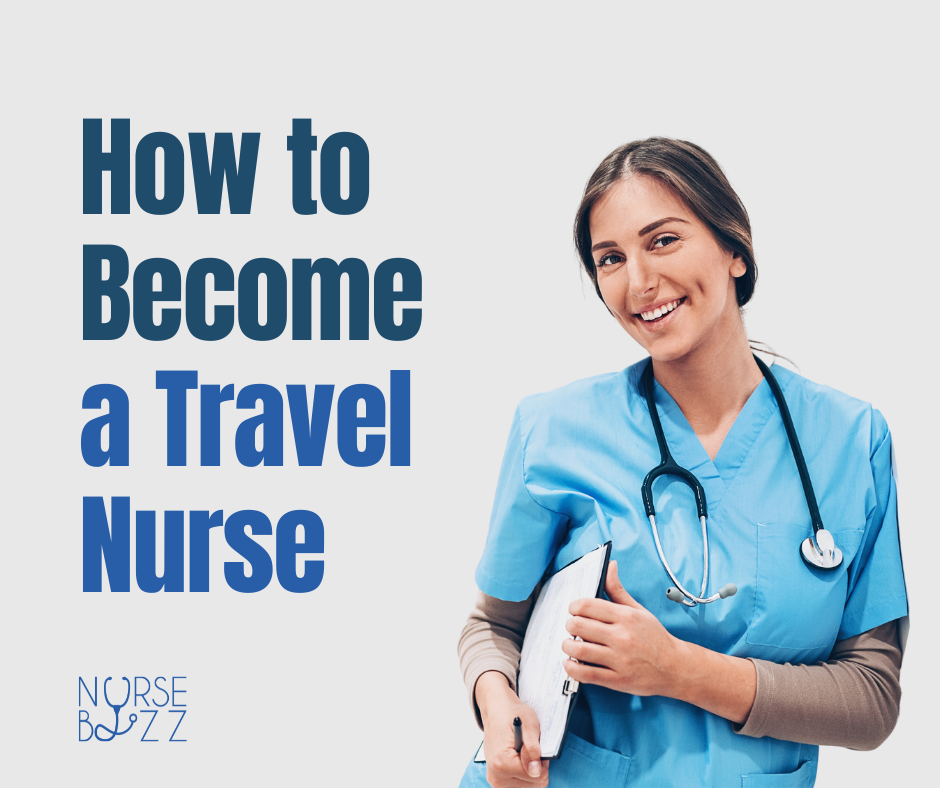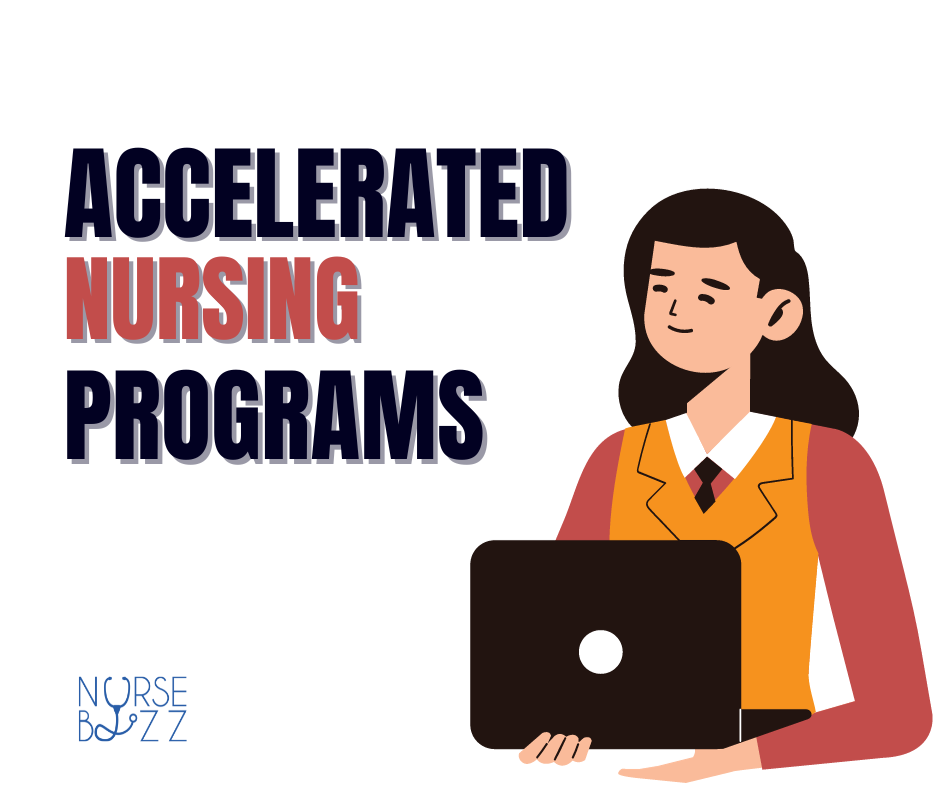Explore alternative pathways to becoming a midwife without a nursing degree.
Are you passionate about bringing new life into the world and providing crucial care to expectant mothers? Becoming a midwife can be an incredibly rewarding career choice, and the best part is that you don’t necessarily need a nursing degree to achieve this dream. In this comprehensive guide, we will explore alternative pathways to becoming a midwife without a nursing degree, helping you navigate your way to this fulfilling profession.
Understanding the Midwifery Profession
Explore alternative pathways to becoming a midwife without a nursing degree.

Before we dive into the details of how to become a midwife without a nursing degree, let’s start with the basics: What is a midwife? Midwives are healthcare professionals who specialize in maternal care, from prenatal to postnatal stages. They offer essential support during labor and childbirth, emphasizing a holistic and patient-centered approach.
To embark on your journey to becoming a midwife without a nursing degree, it’s crucial to understand the various types of midwives and their roles within the healthcare system.
Let’s delve deeper into each of the five types of midwives:
1. Certified Nurse-Midwives (CNMs):
- Education:
Becoming a Certified Nurse-Midwife (CNM) starts with achieving the registered nurse (RN) status, obtained by completing a nursing degree, whether an Associate Degree in Nursing (ADN) or a Bachelor of Science in Nursing (BSN).
Once licensed as an RN, individuals can advance by enrolling in a Master of Science in Nursing (MSN) Midwifery program. Successful program completion renders them eligible to take the national CNM Examination, administered by the American Midwifery Certification Board (AMCB). Earning CNM status through this process establishes one as a Certified Nurse Midwife, with CNMs holding recognition as advanced practice registered nurses (APRNs).
- Training:
CNMs are distinguished by their comprehensive training and education. They possess nursing degrees, typically at the bachelor’s or master’s level, and specialized midwifery training.
- Practice Settings:
CNMs boast a broad practice scope and are equipped to work in diverse healthcare settings, including hospitals, clinics, and birthing centers.
- Services Offered:
Their expertise spans a wide array of women’s health and maternity care services, encompassing prenatal care, labor and delivery support, postpartum care, family planning, and gynecological services.
2. Certified Midwives (CMs):
- Education:
Becoming a Certified Midwife (CM) represents a distinctive route to midwifery, diverging from the registered nurse (RN) trajectory. Importantly, this path doesn’t necessitate prior nursing experience. Instead, comprehensive training is integrated into the MSN program itself.
Enrolling in an MSN in Midwifery program is open to individuals with a Bachelor’s degree in any discipline, provided they meet the required science prerequisites. To secure licensure, successful completion of the national certification examination administered by the American Midwifery Certification Board (AMCB) is essential. To sustain certification, periodic re-certification, involving specific continuing education requirements is mandatory.
However, it’s essential to acknowledge a limitation: CMs hold legal recognition and licensure in only a handful of states, including New York, New Jersey, Maine, Rhode Island, and Delaware.
- Training:
CMs are explicitly trained in midwifery through non-nursing educational routes. They typically have bachelor’s or master’s degrees in midwifery or related fields.
- Practice Settings:
CMs focus on providing women’s health and childbirth care. They may work in hospitals, clinics, or birthing centers.
- Services Offered:
CMs offer services similar to CNMs, including prenatal care, childbirth assistance, and postpartum care, with a strong emphasis on natural childbirth and women’s health.
3. Certified Professional Midwives (CPMs):

- Education:
Becoming a Certified Professional Midwife (CPM) provides a flexible pathway, with educational prerequisites varying by program. Typically, having a high school diploma or its equivalent is the standard requirement, enhancing accessibility to this midwifery profession. Becoming a Certified Professional Midwife (CPM) involves two primary routes:
The first option is pursuing certification through the North American Registry of Midwives (NARM) Portfolio Evaluation Process, which requires a high school diploma or equivalent.
The second pathway involves graduating from a midwifery program accredited by the Midwifery Education Accreditation Council (MEAC) and earning a certificate or degree.
The advantage of CPM certification lies in its recognition. Unlike CNMs, CPMs hold licensure in 31 states, legally acknowledging their expertise and permitting practice within those jurisdictions.
- Training:
CPMs are educated and trained specifically in midwifery. Their training often involves apprenticeships, formal midwifery education without a nursing degree, and clinical experience.
- Practice Settings:
CPMs primarily practice in out-of-hospital settings, such as homes and birth centers, where they specialize in providing care to women experiencing low-risk, natural childbirth. However, it’s essential to note that this specialization may not align with those aspiring to work primarily in hospital settings.
- Services Offered:
They focus on supporting natural childbirth and providing care during home births and birth center settings.
4. Direct-Entry Midwives:
- Education:
Direct-entry midwives receive their midwifery training through state-approved programs that prioritize apprenticeships. This training approach has demonstrated effectiveness in various U.S. states.
In this comprehensive 3-year program, aspiring midwives are tasked with providing care to a minimum of 50 women during each of the prenatal, intrapartum, and early postpartum phases. This hands-on experience is instrumental in honing the skills and expertise necessary for midwifery practice.
To qualify for licensure, aspiring direct-entry midwives must also observe an additional 50 women under the guidance of experienced midwives. Once these criteria are fulfilled, individuals are required to pass both national and state midwifery licensure examinations to obtain their licenses.
- Training:
Direct-entry midwives typically lack formal nursing education and learn through apprenticeships, self-study, and hands-on experience.
- Practice Settings:
They often specialize in home births and prioritize natural childbirth experiences for their clients.
- Services Offered:
Direct-entry midwives provide holistic care during pregnancy, labor, childbirth, and the postpartum period. They may emphasize personalized and culturally sensitive care.
5. Lay Midwives (Traditional or Community Midwives):
- Education:
They typically do not have formal medical or midwifery education; they are mostly uncertified or unlicensed barring some states.
- Training:
Lay midwives often lack formal education but gain their midwifery skills through apprenticeships, hands-on experience within their communities, and traditional knowledge passed down through generations.
- Practice Settings:
Lay midwives are deeply rooted in their communities and typically provide care in home or community settings. It’s important to note that the role and legality of lay midwives can vary widely depending on the country or state. In some areas, they may work closely with healthcare professionals, while in others, they may face legal restrictions or licensing requirements.
- Services Offered:
Lay midwives offer personalized and community-focused care, emphasizing a holistic approach to pregnancy and childbirth. They are known for supporting natural childbirth and may serve underserved populations.
Alternative Pathways Without Nursing Degrees

How to become a midwife? To become a midwife, you typically start by obtaining a high school diploma or equivalent. Then, choose your preferred types of midwifery, such as certified nurse-midwife (CNM), certified midwife (CM), certified professional midwife (CPM), Direct-Entry Midwife, or lay midwife.
1. Formal Midwifery Programs:
- Education: These programs are typically offered by universities and colleges and are designed to provide aspiring midwives with a formal education in midwifery.
- Curriculum: Students in formal midwifery programs cover various topics, including prenatal care, childbirth, postpartum care, women’s health, and newborn care.
- Degree Options: Depending on the program, students can earn a bachelor’s or master’s degree in midwifery upon completion.
- Clinical Training: These programs often include clinical rotations and practical experience in healthcare settings, allowing students to apply their knowledge in real-world scenarios.
2. Online Midwifery Courses:
- Flexibility: Online midwifery courses are a convenient option for those who prefer self-paced learning and flexibility in their studies.
- Content: These courses cover essential midwifery topics, and students can access lectures, resources, and assignments online.
- Instructors: Students typically have access to experienced midwifery instructors who provide guidance and support.
- Hands-On Training: While online courses offer theoretical knowledge, hands-on training and clinical experience may need to be pursued separately through clinical placements or apprenticeships.
3. Apprenticeships:
- Hands-On Learning: Apprenticeships offer hands-on training under the mentorship of experienced midwives. This practical experience is invaluable for aspiring midwives.
- Supervised Practice: During an apprenticeship, you’ll attend births, assist with prenatal and postpartum care, and learn essential midwifery skills while under the supervision of a seasoned midwife.
- Duration: The duration of apprenticeships can vary, but they typically involve a significant commitment of time and effort.
- Certification: Some midwifery organizations and certifying bodies recognize apprenticeships as a valid pathway to midwifery certification for non-nurses.
Educational Requirements

How to become a midwife without a nursing degree, you must meet specific educational requirements, which can vary depending on your chosen pathway.
1. Academic Prerequisites:
- High School Diploma or Equivalent: Most midwifery programs, whether formal or informal, require candidates to have a high school diploma or its equivalent, such as a GED.
- Additional Prerequisites: Some programs may have specific prerequisites related to science or health-related coursework. These prerequisites may vary from one program to another, so it’s essential to research the requirements of the program you intend to pursue.
2. Midwifery Program:
- Formal Midwifery Programs: If you opt for a formal midwifery program, you’ll enroll in an accredited institution that offers midwifery education without a nursing degree. These programs are designed to provide comprehensive training in midwifery.
- Curriculum: Formal midwifery programs cover a broad range of subjects, including but not limited to:
- Prenatal care and assessment
- Labor and childbirth management
- Postpartum care
- Newborn care
- Women’s health
- Degree Options: Depending on the program and your educational goals, you may earn a bachelor’s or master’s degree in midwifery upon completion of the program.
3. Clinical Training:
- Hands-On Experience: Practical, hands-on training is an integral part of midwifery education. During your midwifery program, you’ll be required to complete clinical rotations.
- Clinical Settings: These rotations typically occur in healthcare settings like hospitals, birthing centers, or clinics, where you’ll work under the supervision of experienced midwives and healthcare professionals.
- Clinical Tasks: Your clinical training may involve attending births, providing prenatal care, conducting postpartum assessments, and assisting with newborn care. This real-world experience is essential for developing the skills and confidence needed to practice midwifery competently.
4. Accreditation:
- Importance of Accreditation: It’s crucial to ensure that the midwifery program you choose is accredited by the appropriate accrediting bodies. Accreditation signifies that the program meets specific educational standards and quality benchmarks.
- Recognized Programs: Look for programs recognized and accredited by midwifery organizations or agencies that oversee midwifery education without a nursing degree. This ensures that you receive a high-quality education that meets industry standards.
How long does it take to become a midwife? The time it takes to become a midwife can vary depending on your chosen educational pathway. On average, it may take anywhere from two to four years to complete the necessary education and training.
Read About: The Ultimate Top 10 Best Watches for Male Nurses
Gaining Practical Experience

Practical experience is the cornerstone of a successful journey toward becoming a skilled midwife. While acquiring knowledge through textbooks and classroom learning is vital, it’s the hands-on training that truly shapes a capable and confident midwife.
1. Clinical Rotations:
- Purpose: Clinical rotations are an integral part of midwifery education, allowing students to apply their theoretical knowledge in real healthcare settings.
- Supervised Learning: During these rotations, you’ll work under the guidance and supervision of experienced midwives and healthcare professionals.
- Hands-On Tasks: You’ll have the opportunity to actively participate in a wide range of tasks, including:
- Assisting with prenatal check-ups and assessments
- Supporting laboring mothers during childbirth
- Providing postpartum care to new mothers and newborns
- Collaborating with the healthcare team to ensure comprehensive care
- Patient Interaction: Clinical rotations provide valuable experience interacting with expectant mothers, offering emotional support, and promoting informed decision-making.
2. Apprenticeships:
- Hands-On Learning: Opting for an apprenticeship is a hands-on and immersive way to gain practical midwifery experience.
- Mentorship: You’ll work closely with a seasoned midwife who is your mentor. This mentorship allows you to learn from their expertise and receive valuable guidance.
- Attending Births: One of the central aspects of an apprenticeship is attending births. You’ll be present at various childbirths, including home births or births in birthing centers.
- Prenatal and Postpartum Care: You’ll assist with providing prenatal care, ensuring that expectant mothers receive comprehensive health assessments, education, and support. Additionally, you’ll be involved in postpartum care for both mothers and newborns.
- Skill Development: Apprenticeships provide ample opportunities to develop essential midwifery skills, such as managing labor, performing newborn assessments, and handling emergency situations.
3. Continuing Education:
- Lifelong Learning: Midwifery is a dynamic field with evolving practices and guidelines. It’s crucial to engage in continuing education throughout your midwifery career.
- Stay Informed: Continuing education programs, workshops, conferences, and seminars allow midwives to stay informed about the latest research, technologies, and best practices in the field.
- Professional Development: Ongoing training enhances your expertise and ensures that you provide the highest quality care to expectant mothers. It also helps you remain up-to-date with changes in regulations and healthcare standards.
Conclusion
Becoming a midwife without a nursing degree is an achievable goal, thanks to the various alternative pathways available. As you embark on this rewarding journey, remember to research your chosen pathway thoroughly, meet educational requirements, obtain the necessary certifications and licenses, and gain practical experience.




